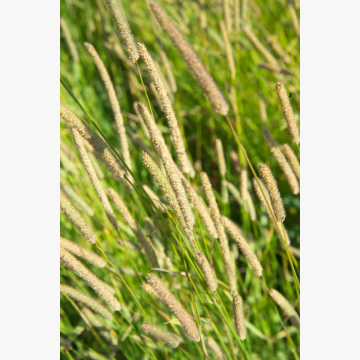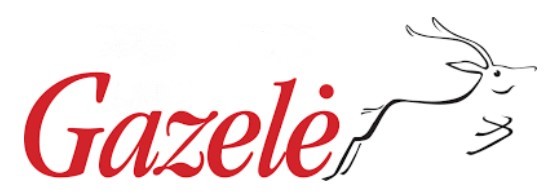- Home
- Seeds
- Fodder grasses and legumes
- FORAGE GRASSES
- Timothy GRINDSTAD
FOR CONSULTATIONS APPLY TO:
Commercial director
Lina Smalskienė
tel. +370 618 02 551
e-mail linak@agrolitpa.lt
Sales manager
Tautvydas Kliučininkas
tel. +370 681 35 093
e-mail tautvydask@agrolitpa.lt
Sales manager
Eglė Petkevičienė
tel. +370 626 95 458
e-mail eglep@agrolitpa.lt
Sales manager
Kotryna Nakrošytė
tel.: +370 601 39 282
e-mail kotryna@agrolitpa.lt
Timothy GRINDSTAD
An early, high yielding timothy with good regrowth capacities
- Early variety with very good regrowth capability
- High total yields of green mass
- High yields in second and third cut
- Good winterhardiness
- Excellent persistence
- Well adapted to mixtures with grasses and clovers
- A Norwegian breed, originating from the indigenous race of southern Norway
- Slightly earlier than Tammisto II timothy, heading time is earlier
- Days to heading (from May 1) – 44.4 (in Norway)
- Early, excellent germination
- High yields of green mass
- Great yields also in the II, III years of cultivation
- Good winter hardiness
- Persistent
- Annual average dry matter yield in official trials in Norway (average 9.53 t/ha):
- in the first year – 11.71 t/ha
- in the second year – 8.6 t/ha
- in the third year – 7.27 t/ha
- Annual average yield of dry matter in various climate zones – 6.74-9.24 t/ha
- Seed yield potential (in Norway) – 710 (even up to 980) kg/ha
- Average seed yield (in Sweden) – 405 kg/ha
- High yields of I cut, but lower than that of the late variety Tammisto II
- Feed value (D-index) of both cuts, I and II, is lower than that of Tammisto II
- High yield of II cut and fast regrowth indicate that this is a more southern type variety
- Injuries in winter – 5.5 %
- DM yield of first cut – 5.258 t/ha
- Dry mass in the 1st cut – 23.1 %
- Dry matter yield in aftermath – 5,866 t/ha
- Aftermath share from total DM harvest – 53 %
- Total DM yield – 11,124 t/ha
- D-value of I cut – 67.7 %
- Protein content in I cut – 112 g/kg
- D-value of II cut – 66.6 %
- Protein content in II cut – 91 g/kg
- Digestible yield (calculated from total yield and D-value) – very high (higher than that of Tammisto II) – 1st harvest – 3.510 t/ha, 2nd harvest – 3.845 t/ha, total harvest – 7.626 t/ha
- Perfect for mixtures with grasses and clover
- Dry mass yield in the second year of growth – 10.39-10.62 t/ha
- Dry mass yield in the third year of growth – 7.29-12.41 t/ha
- Green mass yield in the II year of growth – 35.88-46.98 t/ha
- Green mass yield in the third year of growth – 38.61-40.44 t/ha
- Days to the first harvest – 46-77
- Resistance to lodging – 9 points (out of 9)
- Winterhardiness – 9 points (out of 9)
- Growth intensity – 7-9 points (out of 9)
- Number of cuts – 3
- Protein content in dry matter – up to 15.1 %
*Official variety tests in Latvia in 2003-2004
- Total annual yield – 11.605 t/ha
- Total annual protein yield – 1.467 t/ha
- Violations in winter – 3.6 %
- Yield of the 1st year – 12.688 t/ha
- Yield of the 2nd year – 11.152 t/ha
- Yield of the 3rd year – 10.519 t/ha
- Digestibility of the 1st year yield (D value, digestible proteins) – 667 g/kg
- Digestibility of the 2nd year yield (D value, digestible proteins) – 645 g/kg
- Digestibility of the 3rd year yield (D value, digestible proteins) – 709 g/kg
*2010-2017 oat research data in Finland, px.luke.fi
- Number of days until heading – 44.4 days (counting from 05.01)
- Injuries after winter – 5.5 %
- Dry matter yield of the first cut – 5.258 t/ha
- The amount of dry matter in the first cut – 23.1 %
- The dry matter yield of the first cut aftermath – 5.866 t//ha
- Total yield of dry matter in the first year of use – 11.124 t//ha
- The aftermath accounted for 53 % of the total dry matter yield in the first year of use
- The amount of fiber (NDF) in the dry matter of I cut – 639 g/kg
- Protein content in the dry matter of the first cut – 112 g/kg
- Amount of digestible organic matter (D-value) in the dry matter of I cut – 67.7 %
- The amount of fiber (NDF) in the dry matter of II cut – 637 g/kg
- Protein content in the dry matter of II cut – 91 g/kg
- Amount of digestible organic matter (D-value) in the dry matter of the second cut – 66.6 %
*2000-2004 data from studies in Finland
The varietal parameters may differ from those indicated here when the testing circumstances differ from quondam
Recommended sowing rate: 12 kg/ha for pure crop, and 6-10 kg/ha when sowing in mixtures
Keravos sreet. 17, Kerava,
LT-38 131 Panevėžys district, LITHUANIA
Enterprise's code 168598128
VAT code LT685981219
Tel. +370 615 11 315
E. mail info@agrolitpa.lt




.JPG)

